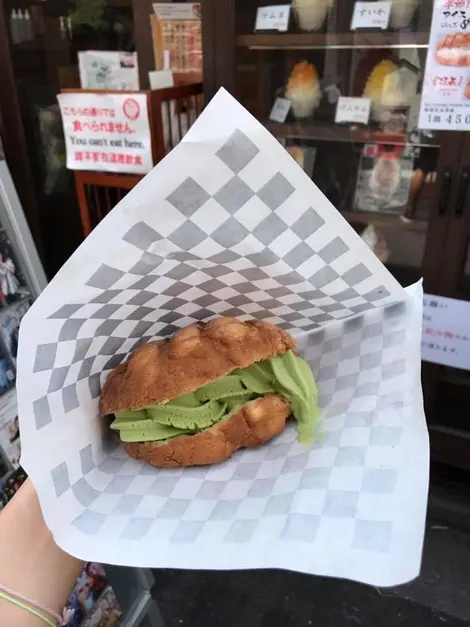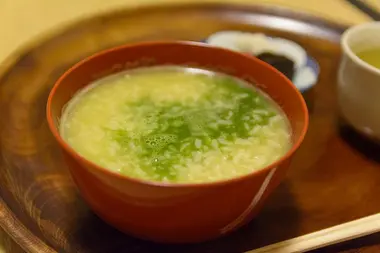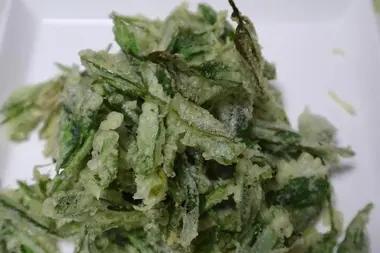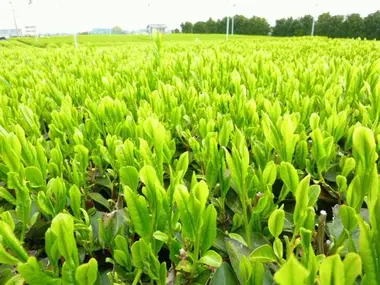Cooking with tea お茶の調理
Tea on your plate
Whether it's consumed ceremonially, or simply bought in a can from a vending machine or konbini, tea is an essential part of daily life in Japan. But Japanese tea isn't just used for drinking...
Tea on the menu
Tea is in every way an indispensable part of Japanese gastronomy. As such, matcha wins when it comes to culinary uses. Its particular bitterness pairs well with many sweet and savory dishes.
During a visit to Japan, you won't be able to miss one of these sweet treats featuring matcha: soft serve ice cream, kakigori, crepes, melonpan, Kit Kats, mochi, dorayaki, taiyaki and sweets of all kinds. Savory pleasures like soba and udon flavored with matcha are also classics, and appear on the menus of many restaurants.
But it's not only matcha that can be used in cooking! Sencha, bancha and houjicha also blend perfectly with other flavors of Japanese cuisine. To tempt your tastebuds we have chosen three dishes using Japanese tea which are still mostly unknown in the West.
Chagayu - 茶粥
Chagayu is a rice and tea porridge that's eaten in western Japan, especially in its home region of Nara Prefecture.
This tea-flavored porridge was created in the temples of the former imperial capital. It's preparation at Todaiji Temple is mentioned in writings dated from the year 752. The dish was originally reserved for religious occasions, but quickly gained the rest of the population.
In the recipe, rice is cooked in an infusion of bancha or houjicha. But in reality it's quite possible to use another variety of tea. In the islands of Seto Inland Sea and Shikoku Island, chagayu is made from goishi-cha, an unusual tea with a two-stage fermentation process, which is dried in the form of small black balls.
- Discover: Setouchi, in the Seto Inland Sea
Chagayu is often eaten in the morning. You can also add vegetables and potatoes, to satiate even the biggest appetites. Using tea gives the rice a sweet aroma, and a particularly refreshing taste.
Ochazuke - お茶漬け
Ochazuke or chazuke is also a dish made using rice and tea, which is easy to prepare. But unlike chagayu, the rice used in ochazuke is already cooked. Just pour green tea or houjicha over the rice in your bowl. Other ingredients such as sesame, umeboshi, sea bream, salmon, fish roe, nori seaweed and wasabi are added.
Ochazuke would be just like the chagayu from a temple in the former province of Yamato (now Nara region). Although it was known about from the Heian period (794-1185), the dish only became really popular during the Edo period (1603-1868).
People back then particularly appreciated its practicality. Nothing is more convenient to put together than cooked rice and hot tea! In 1952, ochazuke went through a small revolution which made it even more convenient. A company developed an instant version of ochazuke, that's still marketed throughout Japan today; small sachets containing dried ingredients and tea powder, that you simply sprinkle over your cooked rice before adding hot water.
Ocha no me no tempura - お茶の芽の天ぷら
The tea-growing regions of Japan all have their own tea-based recipes.
Of these, it's worth mentioning ocha no me tempura, or "tea bud tempura". In Shizuoka prefecture, they grow shincha, the first tea harvest of the year, made using young leaves and their buds. These young shoots are harvested at the beginning of May, during the very first harvest.
These soft young leaves are dipped in tempura batter and deep-fried. These tempura bites give off an unusual spring-like aroma. Shincha is only available for a few weeks each year, make this tempura a rare and sought-after dish.
In Shizuoka, the young tea leaves are also cooked with seasonal vegetables in soy sauce.
So, are you ready to put some tea on your plate?























